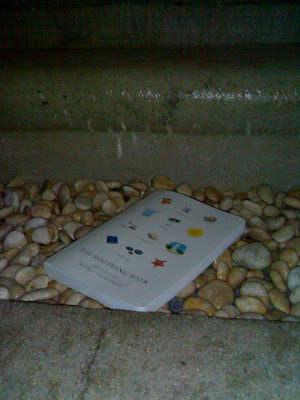 The Game
The Game
A.S. Byatt
ISBN: 0-679-74256-5
My copy: Paperback, 286 pages
Purchased: December 11, 2009 from Booksale
Read: February 2, 2010
“B is for Byatt. And Byatt is a biyatch.” That’s what I was muttering to myself while reading this book, the second for my A to Z challenge. It was a hard read; I struggled to keep awake and not to trade it for a Charles Baxter, or Elizabeth Berg, or just about any other B-surnamed author.
The Game is a good illustration of my contention that good writing is not enough to make a book likable.
Byatt is obviously a good writer. She is an intelligent woman, and she seemed hellbent to prove it to her readers. She obviously did extensive research on snakes and religion and the Amazon, and she was determined not to allow an ounce of research matter go to waste, as she filled her narrative with shedloads (British for truckload) of information that had this tranquilizing effect on me. Pedantry at its finest. Of course, I am willing to admit that all the fascinating, scientific knowledge just might be way beyond my capacity to understand and all my scathing remarks on the novel’s obtuseness just indicate that I am not smart enough to be a Byatt reader. But since this is my review and no one can stop me as I type it at 1 o’clock this morning, I’ll continue my Byatt-bashing.
I just felt that the knowledge-dumping was way too much and got in the way of the narrative. In a few instances, she delivers paragraph after paragraph to quote a TV host’s script. Granted, it’s a show about natural science and that this is set all the way back in 1967, but I think even way back then, sound bites, concise and catchy lines were more appropriate to TV than what sounds like what a science teacher would read in class.
The novel is thin on the plot and heavy on the pondering. Kilometers of interior monologue. Pondering, pondering, and more pondering. The kind of pondering that leads characters to kill themselves and readers to want to kill themselves.
But more than the pedantry and the sedative qualities of the piece, what really irked me most was that none of the characters were likable. I am not looking for perfection. Nor am I looking for one-dimensional goodness; I do appreciate the brokenness, the frailties of characters that give them human qualities. Sometimes, these faults are precisely what make them accessible and even lovable. I need to relate to them or even fall in love with one of them to enjoy a book.
Cassandra is the elder sister, an unmarried university don feared by her students . Domineering, somber, isolated from the real world by an aversion to the enjoyment of life. She wears staid and worn-out clothing that hide her personality and vulnerabilities, and she ensconces herself in academia to further detach herself from anything that can hurt her. Writer turned TV show art consultant Julia is a successful novelist but failed mother and wife. The more attractive, more charming sister, she is is self-absorbed, flirtatious, and as the story would prove, mean-spirited. As children, the two engage in a game they invented, a complex game filled with allusions to King Arthurian characters. Their close relationship is fissured by a couple of events that Cassandra perceives as betrayal. Time, distance, and resentment drive them further apart, and it takes a death in the family and a snowstorm to force them together again, at least physically.
Simon is the third party in this bitter love triangle. Both women spend a lot of time ruminating on this man who was partially responsible for their sisterly rift and by the time he actually enters the picture, I was desperately hoping that he would be drop-dead gorgeous, enigmatic, an irresistible rake who would inspire unbridled lust. No, he’s a cad. A boring, nerdish (not in a good way), spineless cad who inspires rapid eye movement, aka deep sleep. The thought bubbles hovering above my head were screaming, you’re fighting over this man?!?
The best part about the book is the ending, which is jarring, disturbing, gasp-inspiring. Probably the novel’s redeeming factor. It hints of a wicked author’s fiendish mind. But the big but is that this ending just makes you hate the characters more as it reveals their nasty, pathetic, selfish hearts.
Maybe this is not one of Byatt’s best books. If I find a copy of Possession, the piece for which she is most famous for, I just might try it to give this revered author another try. But I assure you, I won’t be in the active lookout in the book bins. In the meantime, I’ll steer clear of Byatt.
On to letter C.









